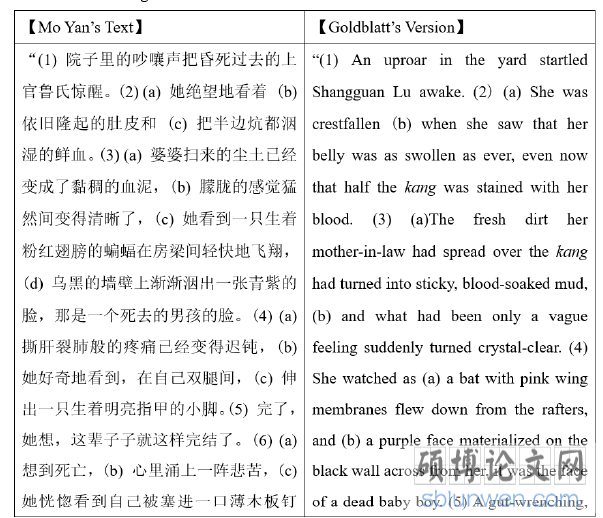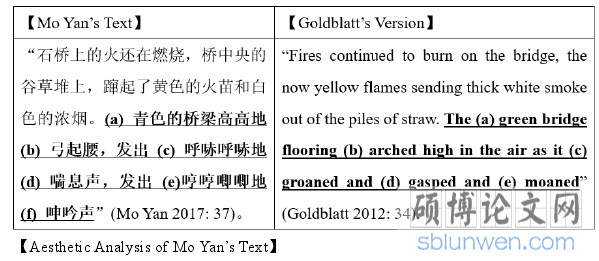Chapter One Literature Review
1.1 Studies on Translation Aesthetics
About the definition of Translation Aesthetics, Zhang Jin states that studying the essence and general law of translation from the angle of Aesthetics can be viewed as translation art or translation aesthetics (1). And in the book A Dictionary of Translation Studies, Translation Aesthetics is explained in detail. Firstly, its research contents include aesthetic objects, aesthetic subjects, aesthetic activities during language conversion, aesthetic estimation, aesthetic appreciation, aesthetic standards, translation methods for aesthetic representation and so on. Secondly, its mission is to propose aesthetic standards for various texts, and to analyze aesthetic issues showing during language conversion. Thirdly, with a good knowledge of aesthetic objects and subjects, the further work is to analyze the aesthetic qualities of aesthetic objects, to explore the dynamic role of aesthetic subjects, and to provide translation methods for aesthetic representation (Fang Mengzhi 296).
1.1.1 Aesthetic Thoughts in Traditional Chinese Translation Theories
As Zhang Boran and Zhang Sijie state, traditional Chinese translation theories originate from Chinese Aesthetics and Philosophy (25). Furthermore, Liu Miqing holds that traditional Chinese theories belong to a branch of traditional Chinese literary theory and Aesthetics (23). Wang Bingqin and Wang Jie believe that some traditional translation theories reveal the theory proposition and methodology of traditional Chinese Aesthetics of Literature and Art (18).
The following chronologically explores the aesthetic thoughts in these translation thoughts such as The Theory of Wen and Zhi, Faithfulness, Expressiveness and Elegance, The Theory of Romantic Charm, The Thoughts of Translation Aesthetics, The Theory of Spirit Likeness, The Theory of Transmigration and The Theory of Three Beauties.
.........................
1.2 Studies on Big Breasts and Wide Hips and Its Translation
Mo Yan’s life experience, his writing style and the historical background of the novel are firstly presented in order to acquire a good understanding of the novel. And then the current studies on Goldblatt’s version and the knowledge gaps follow on.
1.2.1 The Features of Big Breasts and Wide Hips
As for the background information of Mo Yan and the novel, it’s necessary to know the five keywords: Gao Mi Country of Shandong, hallucinatory realism, Cultural Revolution, mother, and the feeling of social reality.
The first relates to Gao Mi Country, which was described in many works by Mo Yan including Big Breasts and Wide Hips. The language with Gao Mi features and cultural resources “reflects Mo Yan’s writing style and soul” (Cheng Guangwei 6). Moreover, Mo Yan talked about Pu Songling’s Liaozhai, clay sculptures of Nie Zhuang, paper-cutting of Gao Mi and Maoqiang (a local opera), which contribute to form the novel (Cheng Guangwei 8).
The second is hallucinatory realism. These words such as “grotesque”, “magical”, “fantastic”, and “hallucinatory” are used to describe his novels in the literary circle. In Big Breasts and Wide Hips, there are many supernatural human beings and powerful ghosts. For example, Third Sister got the supernatural power, jumping from one tree to another and curing diseases.
..........................
Chapter Two Theoretic Frame
2.1 An Introduction to Aesthetic Psychology in Translation
Translation, if viewed from the angle of Aesthetics, involves in complicated aesthetic psychological activities including aesthetic perception, aesthetic emotion, aesthetic imagination, and aesthetic understanding (Yan Linhai 2015: 16). Professor Yan Linhai, inspired by traditional Aesthetic Psychology and Aesthetics in China, creatively combines Aesthetic Psychology with translation, and then produces his Aesthetic Psychology in Translation. To get a good understanding of his thoughts, the following offers a detailed explanation for research objects and methods, and translation aesthetic objects and subjects.
2.1.1 Research Objects and Methods
In order to know the research object of Aesthetic Psychology in Translation, it’s needful to first know what aesthetic process translators would go through. When understanding original texts, translators are aimed at discovering the aesthetic qualities showed in the two levels of form and content. During the expressing phase of translation, the mission of translation workers is to find proper linguistic forms to represent the aesthetic qualities which are found in the understanding phase. In other words, the aesthetic process of translation involves in the aesthetic qualities of original texts in the levels of form and content, translators, and translators’ aesthetic psychological activities. Therefore, the research objects of Aesthetic Psychology in Translation not merely include the aesthetic objects and aesthetic subject of translation, but also aesthetic psychological mechanism during translation.
........................
2.2 Aesthetic Mechanism in Translation
As mentioned above, Aesthetic Psychology in Translation studies not only original texts and translated texts, but also translators and their aesthetic psychological processes. The aesthetic psychological processes refer to translation aesthetic mechanism, including aesthetic control mechanism and aesthetic psychological mechanism. The following will introduce the aesthetic control mechanism and the aesthetic psychological mechanism respectively.
2.2.1 Aesthetic Control Mechanism
Aesthetic control mechanism refers to the basic principles by which translators control their translation behaviors according to specific aesthetic intention (Yan Linhai 2015: 50). In other words, translators consciously decode texts based on their own aesthetic intention or aesthetic purpose. As for the factors of controlling aesthetic activities, Professor Yan Linhai gives his explanation that they are related to translators’ aesthetic attitude, fixed aesthetic tendency, aesthetic standards, and aesthetic methods.
As for esthetic attitude, it means that translators tend to find the beauty during understanding texts. And aesthetic attitude is not firmly fixed. As a translator understands more about source texts, his aesthetic attitude would be different. Due to the dissimilarity in society, time, nationality, culture and knowledge system, aesthetic attitude would also be distinct (Yan Linhai 2015: 50-51).

......................
Chapter Three Analysis of the Influence of Aesthetic Psychology on the Quality of Translations ........................................ 27
3.1 Goldblatt’s Aesthetic Observation Process .............................. 27
3.1.1 Goldblatt’s Explanation of His Translation Process ........................... 28
3.1.2 The Use of Imagination ............................ 29
Chapter Three Analysis of the Influence of Aesthetic Psychology on the Quality of Translations
3.1 Goldblatt’s Aesthetic Observation Process
It’s a crucial step to observe and understand texts if translators want to gain perceptual and rational knowledge about the aesthetic qualities in texts. In Goldblatt’s aesthetic observation process, what psychological state was Goldblatt in? How was the mobilization of Goldblatt’s imagination? How did Goldblatt control his imagination? The following will explore the answers for the above questions.
3.1.1 Goldblatt’s Explanation of His Translation Process
In order to gain the beauty of texts, Chinese Taoism and Dr. Bullough’s theory of “Psychical Distance” hold that the real aesthetic appreciation lies in the psychological state of “tranquility”. In other words, translators should get rid of all the utilitarian thoughts and feelings towards original texts. The translation scholars like Wang Ping and Liu Miqing also agree with it. According to Professor Yan Linhai, translators need to be a peaceful psychological state when observing texts. In other words, translators must ignore all distracting thoughts, personal consideration and utilitarian purposes like money, power, editors and the ideology of target languages. In such a psychological state, translators can gain an objective understanding of texts’ beauty with the help of imagination.

..............................
Conclusion
By making a case study of Big Breasts and Wide Hips, the thesis explores the influence of aesthetic psychological processes on the quality of translated texts, discusses how translators control their aesthetic psychology and analyzes the basic features of translators’ aesthetic psychology. After the comparison between Mo Yan’s text and Goldblatt’s version, some enlightenment is gained as follows. Firstly, translation workers need to fully mobilize one or more of aesthetic psychological processes so that aesthetic qualities and writers’ writing intention could be reproduced in translated texts in high limit. Secondly, mobilizing only one of aesthetic psychological processes is not good enough for reproducing the aesthetic qualities of original texts. Thirdly, there are two types of basic features for translators’ aesthetic psychology: subjective initiative and being restricted by aesthetic objects.
Meanwhile, some enlightenment is gained when reviewing the study of Translation Aesthetics and the study of Aesthetic Psychology in Translation. Firstly, the study on the dynamic relation between aesthetic objects and aesthetic subjects needs to become more systematic. Secondly, aesthetic representation means should include the study of macro-scope strategies and specific techniques. Thirdly, the complex interaction among aesthetic psychological processes deserves to be explored further. Fourthly, it is needful to find the differences between the emotional empathy of readers and that of translators.
reference(omitted)
